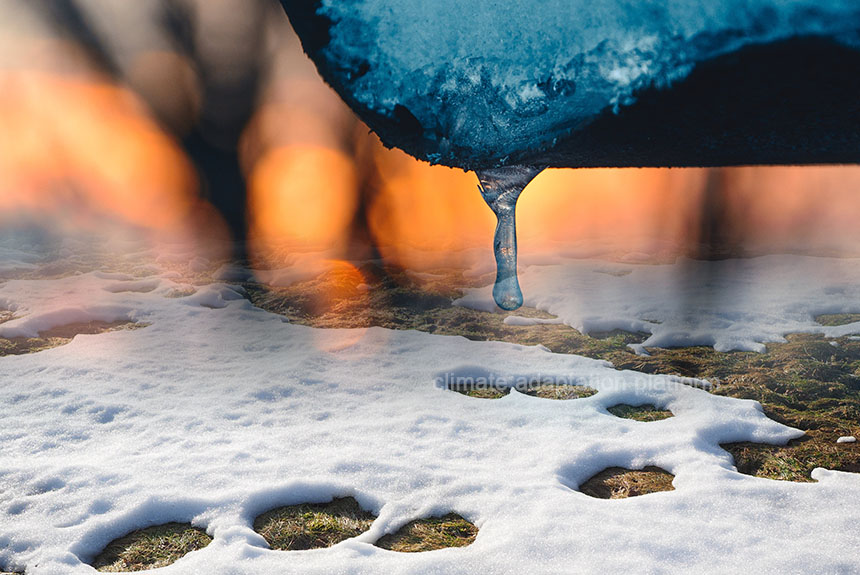According to a CNN report, climate change is causing snowfall to decline globally. The report is based on the analysis and maps from a NOAA climate scientist.
A warming climate will mean that precipitation will come in the form of rain rather than snow. It’s not just a matter of shovelling less snow; receding snow can disrupt food and water for billions of people, the article notes.
In the short term, winter storms will become more severe, as data for the Northeast United States shows, but as global temperature rises, the world will transition from snow to rain as the laws of thermodynamics prevail.
According to Brian Brettschneider, a climate scientist with the National Weather Service in Alaska and the brains behind the data analysis in the report, “Snowfall has declined 2.7% globally since 1973. The decline is particularly notable in the Northern Hemisphere’s mid-latitudes, where much of the world’s population resides.”
Less snow means less snowpack that people depend on for water, which may be compensated for more rain with a warming planet. However, a 2015 study shows that 2 billion people relying on melting snow for water face 67% risk from declining snow. These people live in parts of South Asia, which depend on Himalayan snowmelt; the Mediterranean, including Spain, Italy, and Greece; and parts of North Africa, like Morocco, which rely on snowmelt from the Atlas Mountains.
Another study published in the Journal of Hydrometeorology on June 2023, “Trends in Northern Hemispheric Snow Presence”, analysed the weekly snow cover data divided into grid sections for analyses between 1967 and 2021. Researchers found snow cover is declining in nearly twice as many grids as it advances.
The study that took at least four years to complete shows that snow is decreasing in the Arctic and southern latitudes of the Northern Hemisphere. Arctic areas are showing heavy snow cover loss.
Along with the general snow decline, there is also a shift in snow coverage. Snow is coming earlier and going away earlier. Snow cover is trending more in November and declining from February to late spring and early summer.
“The increased ablation in the warm season is not offset by the increased snow cover in the late fall, possibly implying an overall change in the timing and distribution of water availability to regions that rely on spring snowmelt,” the study notes.
Snow cover is increasing in other places such as Eastern and central Canada, the Kamchatka Peninsula in the Russian Far East, and the Japanese vicinity.
The explanation for the increasing snow cover in some areas is that warming temperatures in typically very cold areas but still below freezing allows the atmosphere to hold more water, which then falls as snow.
Sources:
Zerkel, E. (2023, November 25). New maps show where snowfall is disappearing. CNN. Retrieved from https://edition.cnn.com/2023/11/25/weather/snowfall-temperatures-climate-change-water/index.html
Jia, Y., Lund, R., Kong, J., Dyer, J., Woody, J., & Marron, J. S.. (2023). Trends in Northern Hemispheric Snow Presence. Journal of Hydrometeorology, 24(6), 1137–1154. https://doi.org/10.1175/jhm-d-22-0182.1
Cerf, E. (2023, June 29). Study shows significant decline of snow cover in the Northern hemisphere over the last half century. UC Santa Cruz. Retrieved from https://news.ucsc.edu/2023/06/lund-snowtrends.html



Leave a Reply